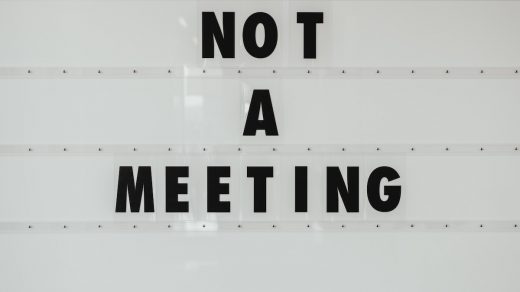Eight times each year, the Federal Open Market Committee (FOMC), a group made up of the Federal Reserve Board members and a rotating selection of heads of regional Federal Reserve Banks, meets to set American monetary policy for the coming weeks. After reviewing reams of information, the committee seeks a consensus policy decision, typically on the interest rate banks must charge one another for overnight loans. (Asleep yet?)
Establishing the overnight borrowing rate is among the most consequential policy decisions affecting the economy; most economists think it entails a trade-off between the rates of inflation and unemployment. Yet FOMC meetings trigger nowhere near the level of public interest or sentiment as, say, income tax policy. Why? Interest rates impact people through a circuitous route: the overnight rate banks charge one another influences the rate at which banks lend to other businesses, affecting whether new businesses form or existing ones expand, eventually affecting employment and economic growth. Tax policy, on the other hand, is much more salient. When taxes go up, I have less money in my pocket.
Tax and monetary policy are critical issues for progressive policymaking, but they require very different strategies from advocacy organizations. This post is the first part in a four-part series on how advocacy organizations can navigate the political and policy dynamics of different issue areas. You can access the rest of the series here. Step one is recognizing how an issue currently impacts the daily lives of individuals and make plans accordingly.
People Pay Attention to What Impacts Our Daily Life
While there are limitations on what organizers or advocates can do to change the perceived impacts on daily life of a particular policy, some strategies and tactics are better than others. In my day job in higher education policy, cost is the key concern. Most Americans know some kind of education beyond high school is all but essential for financial security and many fear high tuition will keep them or their family members from the opportunity to earn a credential. High costs, however, are far from the only problem in higher ed. For example, colleges often structure their programs in ways that make it difficult for students to graduate on time, which in turn makes it less likely they will graduate at all. Taking on student debt to attend school without earning a degree (non-completion) is among the worst outcomes because students must still pay back the loans, but without the help of higher earnings a degree typically confers.
One of my favorite advocacy examples of tying an obscure issue (non-completion) to a strongly felt issue (cost) comes from an advocacy group called Campaign for College Opportunity (CCO). (I was lucky enough to serve on the board of CCO and watch these folks in action.) CCO observed that community colleges and state universities in California routinely prevented students from getting degrees in two or four years because they lacked space in key classes and maintained a labyrinth of registration requirements. As a consequence, students ended up taking far more time and credits than necessary to complete their degrees. CCO’s staff came up with the idea to calculate and publish the added cost to the typical student, neatly tying obscure reforms to course planning, institutional funding for space at universities, and other programmatic issues to the prevailing fear about college costs. The research is both accurate and compelling—and while a policy report might not send people out into the streets, a policymaker wanting to respond to constituent demands on affordability could easily pick up the solutions put forward by CCO and drop them into a bill.
People React More Strongly to Potential Losses than Potential Gains
Perceptions about how exactly a policy impacts daily life also underlie our political reactions. Psychologists have shown that humans typically fear losing something (say $100) more than they are excited by gaining an equivalent amount – a concept known as loss aversion. Losses are thus more politically motivating than potential gains.
The recent history of health reform demonstrates how this plays out in practice. When the Obama Administration and Congressional Democrats were moving legislation that became the Affordable Care Act (ACA) through Congress, public opinion was sharply split, with the opposition camp expressing more intense feelings. Recall President Obama’s frequent and controversial claim that “if you like your current plan, you can keep it” – designed to allay fears of losing something. However, the ACA’s popularity grew once people experienced the law’s benefits, which included newly provided health insurance for 20 million people and protections for more than 100 million Americans with pre-existing conditions. When Republicans took power on a repeal platform, they failed to fully repeal the law in part because it is harder to take away benefits that individuals already have than to procure new benefits in the first place.
Advocates can take heed of these lessons prospectively. Partly, loss aversion explains why it is easier to stop a bill than to move one forward. Framing an issue you oppose as a threat to something people enjoy and benefit from is often a winning strategy. Local homeowners who want to keep their exclusionary single family zoning will show up in droves to city council meetings. Often, there’s a way to flip the framing around to take advantage of this strategy to move an idea forward; for example, this Center for American Progress report pushes for a new paid leave program by quantifying the cost of inaction, describing how much workers are losing in wages every year policymakers fail to act.
Supporters of universality in policies (as opposed targeting policies to the most financially needy) rely on this reasoning. For example, promoting universal free college over increasing financial aid targeted to low-income students means that once the policy is enacted, everyone benefits from lower costs. If rich and poor alike have a stake the thinking goes, attempts to cut funding will trigger wide opposition and make it more likely that free college and associated funding persist.
It’s Not Just Financial Interests, Our Identity And Values Matter Too
In the examples above, I primarily discuss health and financial impacts, but it is important to note that people will often engage politically on policies linked to their identity or core values, even at the expense of their financial self interest. For example, many (though not a majority) of Americans support higher taxes on themselves. Conversely, many non-college-educated white men, who tend to be lower-earning than more educated voters, support Donald Trump and the Republican Party, despite the fact that their economic policies favor higher-income Americans. Political scientists Jacob Hacker and Paul Pierson’s recent book Let Them Eat Tweets argues that conservative elites sell unpopular economic policies that benefit only a wealthy few by appealing to racial resentment, xenophobia, and culture wars around guns and abortion issues.
When it comes to identity politics, the way for advocates or organizers to engage is fairly straightforward: speak to the core values or identity that people hold. A resident of New York City who may never visit Alaska might still financially support the World Wildlife Fund’s attempt to combat climate change and protect polar bears if she identifies as someone who cares about the environment. Indeed the large wildlife preserves in Alaska stemmed from consistent organizing on the part of environmental groups, in many cases over the objections of Alaska’s representatives in Congress. This included sustained grassroots campaigns by people who never expected to visit the reserves, but thought they should exist.
Conclusion and Next Steps
So far I’ve written about how the ways in which policy affects people influences their opinion and willingness to engage. This can create limitations on what advocates can accomplish, especially in the near term, but understanding the dynamics also reveals opportunities. For example, drawing a connection on an obscure higher education issue to how it impacts college affordability can win support from voters worried about college costs, and convince public officials to include your idea as part of their larger platform. Of course, policy impacts are just one element of an issue landscape. The number of people impacted and the relative intensity of their support or opposition also have a major influence on the political dynamics of an issue. I turn to that topic in the next post of this multi-part series.



2 Responses
[…] How Are People Affected? […]
[…] widely based on the resources available, the dynamics surrounding the issue (discussed in parts 1 and 2 of this series), its history, and leadership. Cecile Richards’s actions to strengthen […]